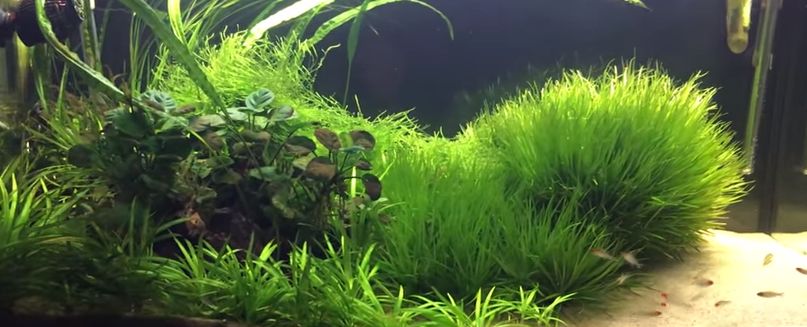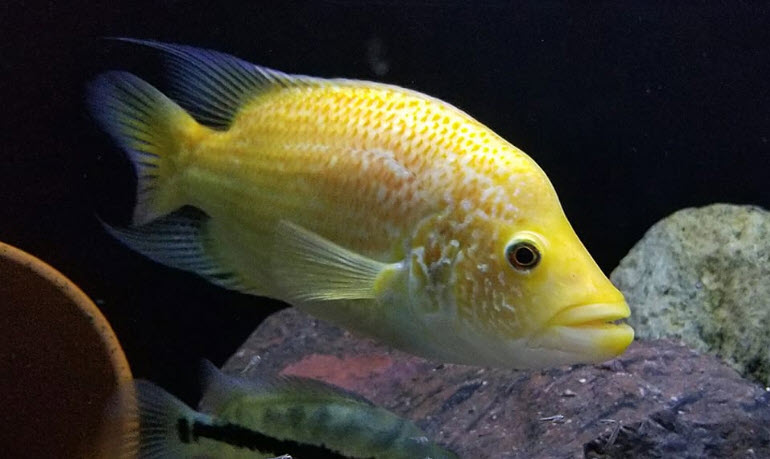
Chloramine (generally monochloramine NH2Cl) is a combination of chlorine and ammonia used in many municipal tap water suppliers to remove bacteria from the water. Chloramines are less prone to dissipation by long runs of piping and is considered less of a carcinogen than chlorine.
Chloramine does not kill bacteria firmly ensconced in a biofilm on the pipes. If a municipality uses chloramine, every once and a while it must pulse a high concentration of pure chlorine into the water to kill the bacteria in the biofilm. If you happen to be doing a water change when that “pulsing” is done, you can kill a lot of fish.

When a system is on chloramine. the chlorine pulses need to be frequent. Depending on the water quality it might be as often as weekly. This is why some suppliers of conditioners recommend five times the level of conditioner for chloramines that is used for chlorine.
About one third of cities in the US use chloramines. To determine if you have chloramine, you can’t really test for it. If you neutralize the chlorine in chloramine with conditioner, then test for ammonia, you won’t get a good answer. The conditioner will interfere with the chemistry of the test. So, you need to call your water supplier and find out what they are using.

Chloramine Toxicity
A reference is pertinent (“Toxicity of Combined Chlorine Residuals to Freshwater Fish”, John Zillich, 1972):
“McKee and Wolf, in their discussion of chloramines, stated that chloramines were more toxic than free chlorine to warm-water fish. As little as 0.4 mg/l can kill adult fish, and 0.05 mg/l is lethal to trout fry. Coventry et al. reported that the average chloramine concentration of 0.76 mg/l was fatal to hardy minnows and that an average concentration of 0.4 mg/l was instantly fatal to sunfish and some bullheads, and a maximum concentration of 0.06 mg/l was fatal to fry after 48 hours….
Merkens stated that the toxicities of the chloramines and the free chlorine must be of the same order. The log median survival time of rainbow trout was directly related to the total residual chlorine. At pH of 7, 0.08 mg/l of residual chlorine almost all in the form of monochloramine, killed about half the test fish after 7 days of exposure.”
So chloramine is toxic in extremely small quantities.

Testing for Chloramines
There is a problem that has occasionally killed tanks of fish. There are two types of chlorine tests. One type of test measures both chlorine and chloramine and is called a “total chlorine” test. One type of test ONLY measures chlorine, it doesn’t measure chloramine. It is important to make sure the test says “Total Chlorine Test”.
A few poor souls used the only chlorine test. They have then stopped using conditioner because “their test kits show they have no chlorine”. And these unfortunate souls have killed tanks of fish because they have chloramine in their water.
Further Information
There are some aquarium hobbyists who are interested in delving deep into the science and the calculations behind all aspects of the hobby. For those who are so inclined the following is pertinent:
5.5.2.1. Ammonia in Chloramines
5.5.3. Conditioners
.
Return to Water Parameters Menu
.
Aquarium Science Website
The chapters shown below or on the right side in maroon lead to close to 400 articles on all aspects of keeping a freshwater aquarium. These articles have NO links to profit making sites and are thus unbiased in their recommendations, unlike all the for-profit sites you will find with Google. Bookmark and browse!
.

Dave says
In reply to Jeremy R chloramine is not well removed by activated carbon. And activated carbon cannot be regenerated. I would recommend a pre-filtration system using an aquarium for any drip system. I go into it in some depth in this article https://aquariumscience.org/index.php/18-2-drip-water-changes/
Jeremy R says
Hi Dave and Ben,
So, I’m trying to work out the best way to do continuous drip water change.
6lph is what I’m aiming for.
I have chloramines at 1.2ppm on average.
I’ve been doing lots of research on using some granulated activated carbon in a 90mm PVC pipe. That way I can regenerate it myself.
But the evidence and data is sketchy to determine 1) how much dwell time I need for the water through the carbon
2) how long will it last before it needs to be replaced.
From what I read total adsorption can be up to 200mg chloramine per gram of carbon.
There was a guy who posted here ( https://www.aceforums.com.au/topic/62723-drip-water-change-systems/) who has some semi commercial operation who shared his system. As a guess, based on his profile location, chloramines is roughly the same as mine.
So I was on this route until …
However, when I calculated out, it looks like his carbon (canister of about 340g) adsorbed 2.5kg chloramines… This resulted in my latest post back to him asking if my assumptions are right (and a bit of a “how is that possible!?”)
Do you have any insight into how I can manage my chloramines on a continuous drip water change at a low rate of 6lph (6 litres per hour)?
I wanted to keep it simple and avoid potential failure of things like dose pumps, timers etc
I also wanted to push the water using town supply pressure, and not park it in some barrel for a few days then to pump it through.
They are preferences though!
Let me know what you think.
Cheers
Dave says
In reply to Brian …. I’m going to assume you have a filter which SAYS it removes 95% of the chloramine. This is marketing hype. It does not do that. Very fresh activated carbon CAN, under conditions of very slow flow, remove 100% of the chloramine for two to four weeks before becoming saturated. So any water change system still needs a way of removing the chloramine before it is added to the aquarium, either a reservoir with conditioner added or a reservoir with a biological filter.
Brian says
Does Chloramine accumulate in the aquarium if the water filter only removes 95%. My water change system changes 5% water daily.